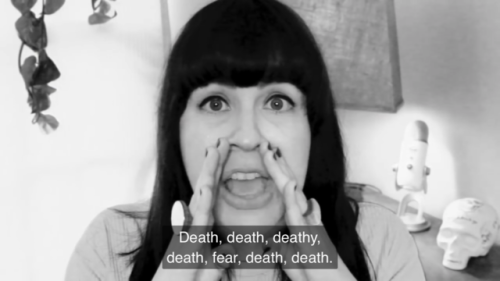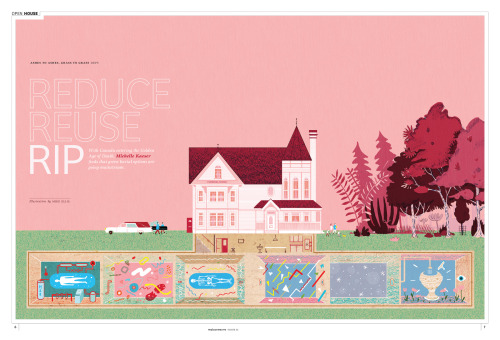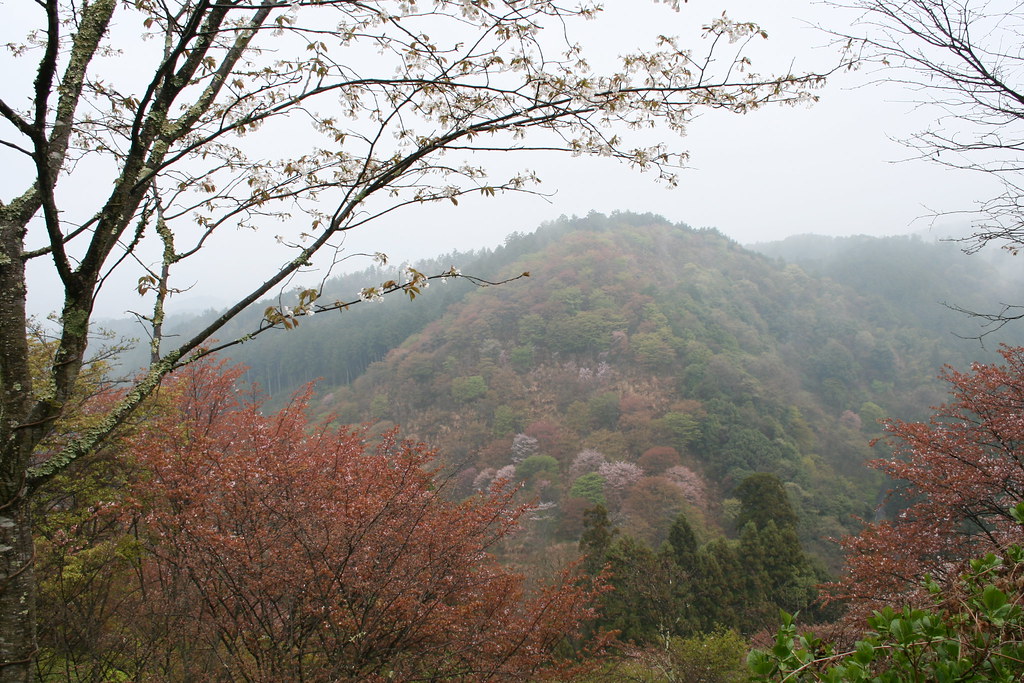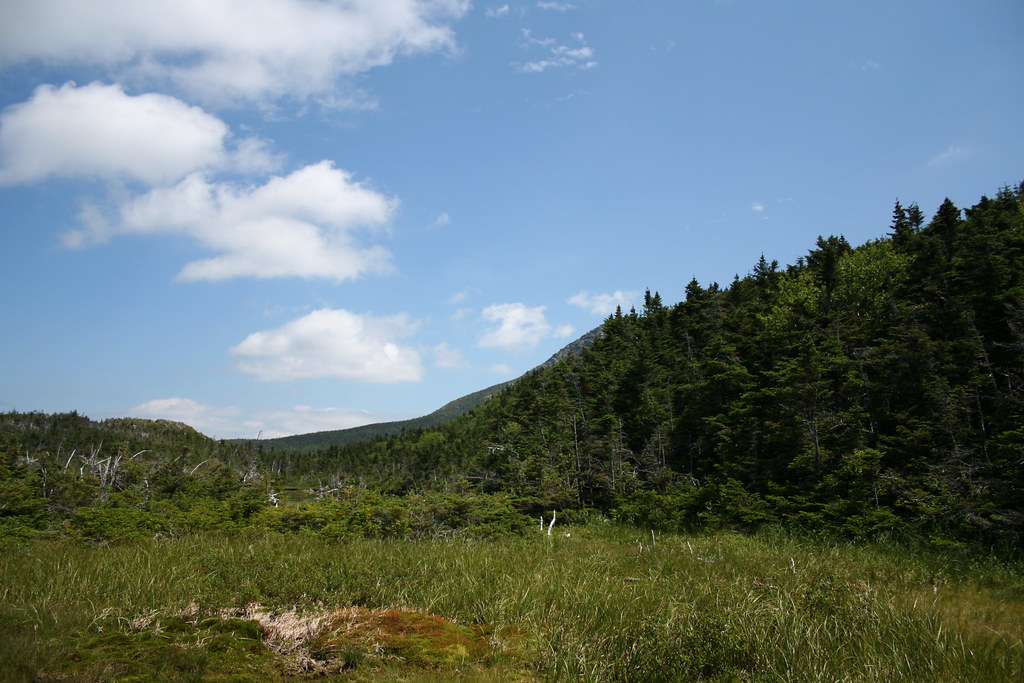#cremation
Y’all should send me your favorite death jokes/memes! I really need a good laugh.
I made a blog site elsewhere to make posts, share my experiences, and get my thoughts out on a more personal level. (Don’t worry: this is still my community-based blog, and it’s not going anywhere). I’m unsure if I want to keep it going or not, but I’d have to gauge interest. How many people would be interested in reading my blog? I don’t want to be writing to an empty audience.
I just wanted to extend a welcome and thank you to all of my followers. It’s amazing to see such a huge death positivity community on tumblr!
I wanted to let everyone know that my submit box is open, and you are welcome at any time to submit your photos, stories, thoughts, and questions. I want this to be a thought-provoking community that draws everyone a little closer to death acceptance!
7 Habits of Highly Effective Death Positive People | Ask A Mortician
What would you want done to your body after you die?
Buried? Cremated? Thrown to the wolves?
Today is one of those happy occasions where I actually have a photo of the place mentioned in the poem(s) I am going to translate/discuss… and even with a somewhat appropriate natural phenomenon (fog trailing across the peak) - although no river in sight. Regardless, this is in the Yoshino Mountains in early April 2007, when I took a day trip down to see the famous cherries. Those cherries are not quite as famous yet in the period of MYS, so there’s nothing about them in these poems, which really only feature Yoshino due to it being the site of the cremation of the maiden for whom these elegies were composed. Nevertheless the cherry blossoms trees scattered throughout the mountain are what make Yoshino still a part of the cultural imaginary in Japan, and that was the inspiration for my trip (well that and Heian literature), but next time I’ll have to remember to think of the poor drowned Izumo no otome while I’m there (hopefully later this year!).
溺死出雲娘子火葬吉野時柿本朝臣人麻呂作歌二首
Two verses by Kakinomoto no Asomi Hitomaro, upon the cremation in Yoshino of Izumo no wotome, who had drowned
山際従 出雲兒等者 霧有哉 吉野山 嶺霏(雨+微)
山の際ゆ出雲の子らは霧なれや吉野の山の嶺にたなびく
yama no ma yu/idumo no kora pa/kiri nare ya/yosino no yama no/mine ni tanabiku
From amongst the mountains/the girl from Izumo/is she now the mist?/that now on Mt Yoshino/trails across the peak?
八雲刺 出雲子等 黒髪者 吉野川 奥名豆颯
八雲さす出雲の子らが黒髪は吉野の川の沖になづさふ
yakumo sasu/idumo no kora ga/kurokami pa/yosino no kapa no/oki ni nadusapu
Myriad clouds thrust into the sky/the girl from Izumo/her black tresses/now float about in the pools/of the Yoshino river.
This is the first drowned maiden verse that I know of in MYS, although it doesn’t give much of a story other than to tell us that Hitomaro is composing at the funeral of a girl who drowned. But elegies for drowned maidens, and the tales of drowned maidens, are a persistent theme throughout the collection, and there seems to have been a certain aesthetic appeal to them, for they persist into Heian literature, albeit in different forms and generally more fleshed out (Unai no otome reappears in Yamato monogatari, and then you have Ukihime of the Genji Uji chapters, who is perhaps the most famous - although she survives). Women who cast themselves into the river, at the mercy of the tide, when faced with no other options, seem to have been a literary trope, but probably more than that - this was probably the “elegant”/”appropriate” way for a woman to die, when she needed to. Usually, this is portrayed as her choice - she chooses to seize control of her own fate and cast herself into the water; the fact that her death is later aestheticized by poets is a separate matter. She certainly doesn’t do it for them. In most cases that I know of where female suicide is aestheticized, however, it is because she is faced with an impossible situation in life, one which usually involves having to choose between two men and being unable to do so (not because she is conflicted, necessarily, but moreso because choosing one over the other or vice versa will result in negative repercussions beyond merely a scorned suitor - such as causing conflict within one’s group/village, or with another family/group/village). Her choice to sacrifice herself to avoid the negative ripples that might result from acting in life, is seen as beautiful - and being swept away by the waves, helpless, is somehow a method of death befitting that sort of sacrifice - admittedly, of course, this is all in the view of the male poets of the age. I am in no way endorsing this, mind you - simply noting this is a literary trope common from this time.
Here we don’t really get any background on Izumo no otome, other than that the manner in which she died was drowning, and she did so in the Yoshino River (information which we can garner from the second poem). We know she is then cremated on Mt. Yoshino, where Hitomaro imagines that the mist trailing over the peak is the smoke from her pyre (and therefore her, herself - a very similar notion with poem #428 in my previous post - girl = smoke from her fire = mist, with no real distinction or leaps of logic in between necessary). The fact that the drowned maiden was already a trope at this time, however, allows us to extrapolate and guess her story in some way mirrors the others (indeed, there is actually no direct mention of her having taken her own life here - we might think it was an accidental death, if it were not for the whole literary matrix that had already formed around the figure of the drowned maiden).
The first banka for this poor girl from Izumo (modern Shimane), who drowns so far away from home in Yoshino (near Fujiwara/Nara), begins with an epithet for Izumo (as does the second), “yama no ma yu.” Both “Yama no ma yu” and “Yakumo sasu” play on the name “Izumo” itself, which means “emerging clouds” - so in the first case, the clouds are emerging from between the peaks, and in the second, myriad clouds are being thrust up into the sky. This leads into the girl’s name, Izumo no otome (”The Izumo Maiden”), as we are not actually in Izumo here, but this use of makura kotoba, while decorating her name and honoring her home, also contrasts sharply with the “Yoshino” that appears in the fourth ku in both poems - and reminds us that the maiden was in a foreign land, far from home, when she died. Like the corpse that Hitomaro encounters by the wayside in poem #426, who had “forgotten his home” and died alone, far away, we get the sense that Izumo no otome died a lonely death. She’s just a young girl (”kora”) but tragically meets her end alone in a foreign land (politically, by this time, Izumo had been integrated into Yamato’s sphere of influence, but was likely still somewhat culturally distinct - as the Izumo no kuni fudoki would suggest - and her presence in the Nara area may have in fact been a political one, to cement ties been the Yamato center and Izumo - this would certainly explain a court poet such as Hitomaro’s presence at her funeral). Neither poem really seems to have a sense for who she is, either - Hitomaro certainly grieves for her death, but not really for her - it’s clear he probably didn’t know her personally, and there seems to be a good amount of distance as he’s viewing her (as smoke, and then as her hair floating in the river [good old synecdoche allowing him to talk about her corpse without actually talking about it]). He views her in much the same way he views the corpse from 426 - a body that has suffered a tragic end, but not necessarily anything more than that.
These two poems are very similar in terms of both structure and content - they mourn the maiden from a detached, even aestheticized point of view. The makura kotoba they use for Izumo is different, but the second ku is identical between the two; the first sees her in the scenery, the smoke from her pyre becoming the mist trailing over the mountains - the second sees her as part of the scenery, and brings us back to the moment and circumstances of her death in a way quite unsettling for a funeral, but perhaps important, to remind those present of the circumstances of the tragedy, and probably perhaps to ensure that her death is seen as a beautiful one, despite the pathos of her end, so young and in a foreign, far off place.
There are certainly more interesting banka out there - these are not the most exciting or emotive of even those I’ve looked at in volume 3 so far, but I think they are important for how they touch upon the drowned maiden motif and for how we begin to see death being aestheticized, rather than merely mourned, something which continues into Heian literature. Older banka focus on the biting pain of grief and the process of mourning - #427 is all about denial, for instance - but the step to making death beautiful, to making death some literary, is interesting. Perhaps this comes out of not knowing the girl in life, and merely composing as part of the ritual, as Hitomaro is doing here - it is hard to say - but there is certainly something beginning here. In any case, this poor girl of Izumo who died at one of the most picturesque places in Yamato… now I’ll think of her when I see the mist at Yoshino, for sure…
I may need to take a break from banka for my next post… too much death, too much pathos…
Been a little slow this week - but I’m gonna just keep going with my Vol 3 banka… This photo is quite old now (taken almost 10 years ago on Mt Lafayette in NH), but I still remember this hike vividly because I remembered how close the clouds seemed, and how they seemed to me to be rising out of, rather than hovering above, the mountains - and so naturally, this is the image that was called to mind by the following poem.
土形娘子火葬泊瀬山時柿本朝臣人麻呂作歌一首
One verse, composed by Kakinomoto no Hitomaro at the time of the cremation of Hijikata no wotome on Mt Hatsuse
隠口能 泊瀬山之 山際尓 伊佐夜歴雲者 妹鴨有牟
こもりくの初瀬の山の山の際にいさよふ雲は妹にかもあらむ
komoriku no/patuse no yama no/yama no ma ni/isayopu kumo pa/imo ni kamo aramu
Hidden away/is Mount Hatsuse – along the mountain ridge/those clouds that linger above: are they my beloved?
I apologize for the crazy syntax here (although I’m not really that apologetic), but the order of things is important here, as it is in most Japanese poetry (saving the verb to the end can make for some great twist endings!). It begins with a makura kotoba “komoriku no” meaning something along of the lines of “in an opening in a hidden spot,” i.e. hidden away, usually inferred to be among mountains - it does not only modify Hatsuse, but rather is used to set the stage for a number of place names that are fairly remote, hard to access, hidden among mountains and away from civilization/the capital. It thus serves a crucial function to set us in a particular remote locale, one that is literally “hidden away” from the rest of the world - a spot where the rituals of death and mourning can take place away from where they might pose the risk of pollution. After the introduction of Buddhism, and particularly following the cremation of Empress Jitō, who was the first royal to do so, cremation became increasingly popular as a funerary practice, and thus the mourning process was fundamentally altered – banka indeed at this point were a dying breed, being replaced by Buddhist ritual chanting appropriate to a Buddhist cremation rite. However, as we can see here, old practices didn’t just immediately give complete way to new: cremation was still taking place on mountains, far from settlement sites, where burial would have also primarily taken place (at least for the elite, whose tombs were usually positioned in some such remote locale, where the procession to the tomb site was also part of the ritual), and this would continue to generally be the case throughout the Heian period and beyond (even when done closer to the capital, the cremation was usually performed at a temple in the hills around the capital, rather than anywhere within the capital proper). Further, banka continued to be composed as part of the mourning ritual, at least through the end of the seventh and the beginning of the eighth centuries: it was perhaps re-styled as a way to process one’s feelings, as much as a ritual verse to placate the spirit itself, but the practice nevertheless persisted. And, indeed, as we can see here, cremation itself became a theme of such verses, perhaps because it was so new, and it figures more prominently into banka for such funerals than the actual burial process ever had (although there are definitely verses where the speaker proclaims his beloved to now be the mountain itself, or speaks of the tomb in some other way). In fact, here there is a touch of “elegant confusion” that seems to aestheticize the funeral pyre itself: the speaker cannot distinguish between the clouds rising above the mountain and the smoke from the pyre.
This is a striking image, perhaps even moreso because the smoke from the pyre becomes such a prominent metaphor for the impermanence of human life in later literature; here, the clouds linger (”isayopu”), almost as if they are unable to continue on, almost as if they are reluctant to leave the site. We are presented, in the first four ku, with a long modifier, all leading up to “kumo” (clouds), and thus ultimately a single image - clouds that linger, waveringly, along the mountain ridge of Mt Hatsuse. It is only in the final ku that we are aware the speaker sees these as something other than clouds, but rather, as “imo” (beloved, referring to the “wotome”/maiden from the preface, who is probably not Hitomaro’s lover but rather just some maiden whose death he was of aware of/whose funeral he attended and was asked to compose a verse for, and thus he channeled the voice of someone who would have loved her as an “imo”). The ending is in fact a rhetorical question, wondering if the clouds could in fact be her, but the implied answer is positive–that they are. Note that they are not likened to the smoke from the pyre, but rather to her herself. She is the smoke, and she is the clouds, there is no distinction - this is strikingly reminiscent of earlier banka that saw the deceased as the tomb, making no real distinction between them (being with the tomb=being with the deceased; here, seeing smoke=seeing the deceased, not merely a sign of them, but actually them). It is possible to see this lack of distinction between sign and signifier as part of a more ritualistic consciousness present in this verse, and this is, of course, a valid interpretation; here, however, I tend to think there is a nascent awareness of the poetic value of blurring the lines between two different phenomena, all while clinging to a ritualistic worldview. In other words, there is not necessarily a need to posit a binary between ritual verse/aestheticized verse, but rather, creating the confusion, and aestheticizing the smoke of the pyre by transforming it into gently lingering clouds along the mountain ridge is a new way to integrate banka into the funerary rite, yielding the bulk of the placation of the spirit to Buddhist chants, but also creating a space where the deceased could be posited as part of the landscape (since there was no longer a permanent physical marker of their presence such a tomb), and thereby for their permanent absence to be denied/negated, a natural and important part of the mourning process for the living. Banka seemed to have filled this niche only for a short time longer, however, for the deceased’s own writings came to have a similar significance of a persistent presence even after their death, and banka mostly fell out of common practice after the age of MYS. However, in this particular moment, they were a way to bridge the gap between the old and new funerary rites, and maintain a way forward for the living to grieve even in the absence of any physical reminder of their loved one.
It couldn’t have been easy to get used to the idea of cremation - and I think this poem shows us part of that process. There is no tomb to posit as the deceased maiden, so the clouds substitute for the smoke from her pyre - in that way, she continues to exist, and exist in a beautiful way. This was probably a comforting notion for those still bewildered by the change. In a way, it is not unlike how people handle the concept of cremation today - often they will spread the ashes of their loved ones at some spot, making them a part of the landscape, and in that way continue to feel their presence. It is a way to simultaneously acknowledge and negate the permanence of their death. Beautifully.
I’ve set up a separate GoFundMe for my sister’s funeral and cremation expenses. Please donate if you can and are willing, and please reblog this and share it wherever you can!
Funeral and Cremation Services for Janie Malady, organized by Wren Sughroue-Stone
https://www.gofundme.com/in-memory-of-mr-b
Hi all. Here’s a little thing I made, and feel a little weird about posting…I can’t afford to lay Mr. B to rest as I’d like to, and the only option besides cremation (unfortunately, based on where I am) is throwing him in the dumpster. I really, really don’t want to have to do that. But with moving costs to pay back and an unexpected issue I’ve been avoiding fixing with my car, I don’t have money to spare for “extras” and this is an “extra”…
Thank you for any help at all. I’ve never done one of these before, so I don’t know how long it will take to raise what I’ll need - or if I’ll even get there! But even part of the way there is closer than I can get doing it alone. Share, and help if you can. If you can’t, that’s ok too, kind words are also welcome. I’ll figure it out somehow <3
question: how would you like your body to be taken care of after you die?











